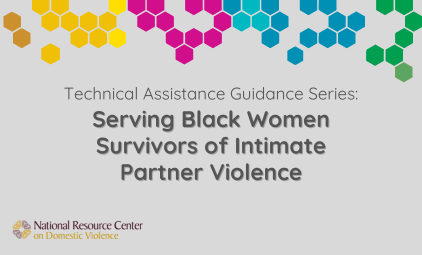Authors discuss a coordinated systems approach, provide model policy responses to issues impacting children exposed to domestic violence and review several confidentiality and information-sharing issues that arise through collaborations between domestic violence programs and child protective services. Each publication includes a review of questions to consider, recommendations for best practices and lessons learned from the Vermont experience.
- Publication #1: Vermont's Coordinated Approach to Increase Safety for Women, Children and Youth Who Experience Domestic Violence (January 2004) by Janine Allo, Jill Richard and Amy Torchia describes the philosophy and structure of the "coordinated approach" as it impacts the three primary areas of services, training and policy. Lessons learned are highlighted.
- Publication #2: Civil and Criminal Responses to Children and Youth Who Experience Domestic Violence: A Model Policy Response for Vermont (January 2004) by Amy Fitzgerald, Jill Richard, Amy Torchia and Janine Allo provides well-documented information for policy development regarding criminal and civil responses to issues impacting children exposed to domestic violence that hold batterers accountable. The paper incudes a discussion of unintended consequences of these policies, a review of several state statutes and a model response and recommendations for Vermont.
- Publication #3 - The Confidentiality Series Vol. 1: Information Sharing in Collaborative Relationship: Domestic Violence and Child Protection (April 2004) by Jill Richard, M.Ed. provides general guidance and possibilities for policy development regarding information sharing between systems and presents avenues for effective inquiry where these issues intersect.
- Publication #4 - The Confidentiality Series Vol. 2: &Child/Youth Confidentiality in Domestic Violence Programs (April 2004) by Amy Torchia and Sarah Nash addresses ideas to consider when making decisions about children's confidentiality issues, provides "best practices" for direct services and schools and discusses teen-specific service considerations.
- Publication #5 - The Confidentiality Series Vol. 3:& Multi-disciplinary Teams Including Child Protection Teams Framework for Co-Occuring Domestic Violence and Child Maltreatment (April 2004) by Ellie Breitmaier, MSW, LICSW describes the structure and purpose of child protection teams, provides guiding questions for domestic violence advocate members of such teams and highlights recommendations.
- Publication #6 - The Confidentiality Series Vol. 4: &Dual or Multiple Relationships: Guidelines for Rural Domestic Violence and Child Protection Collaborations (April 2004) by Ellie Breitmaier, MSW, LICSW discusses actual and perceived conflicts of interest when service providers act in more than one role or relationship, providing recommendations on how to address these dilemmas/questions.
- Publication #7: &Understanding the Current Mental Health Needs of Children Experiencing Domestic Violence in Vermont: Recommendations for Enhancing and Improving Responses (August 2005) by Kathleen J. Moroz, DSW, LICSW in consultation with Ellie Breitmaier, LICSW and Amy Torchia, reports on findings from a study investigating the number of children/youth in Vermont exposed to domestic violence, the effects of this exposure on their social/emotional development and mental health, services provided by domestic violence network and mental health programs, perceived barriers to providing these services, the training needs of service providers in Vermont and both strengths and gaps in the continuum of services for these children/youth.













